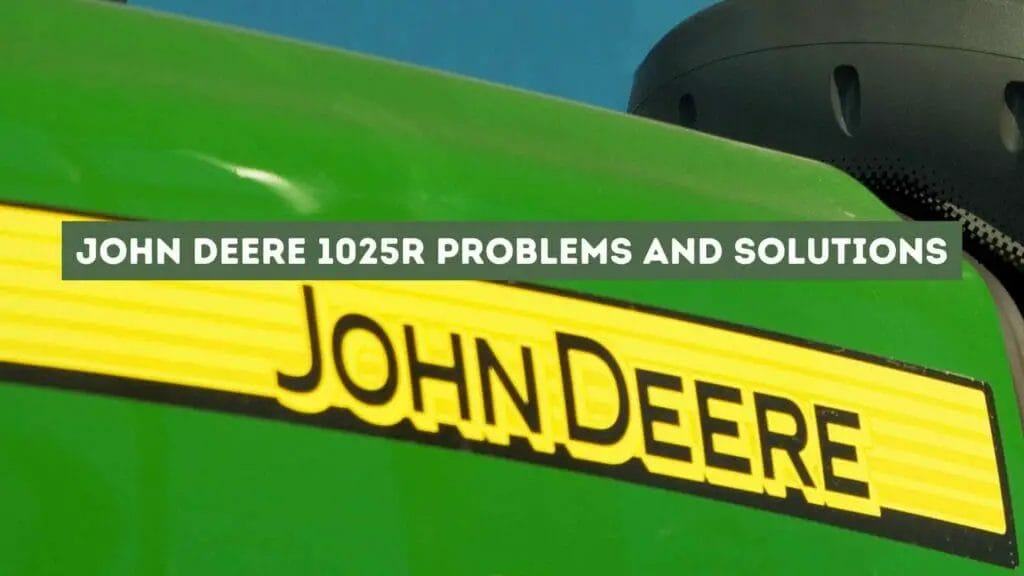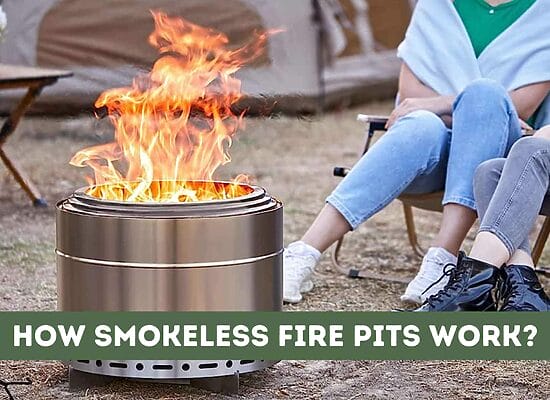
The John Deere 1025R is a sub-compact tractor with an engine power of 23.9hp. It has a hydraulic system with a 3-point linkage which can lift 344kg. The tractor has a two-range hydrostatic transmission.
All these features, combined with the John Deere heritage, have made the 1025R a very popular machine indeed. But the 1025R does have its problems- this article takes an in-depth look at the 8 common problems the 1025R has and offers solutions to them.
8 Common John Deere 1025r problems
By familiarizing yourself with these issues, you can take proactive steps to keep your 1025r operating at its best. Additionally, understanding how to troubleshoot and fix common problems can save us time and money in the long run. I’ll focus on issues such as:
- Starting problems
- Steering problems
- Hydraulic problems
- Deck problems
- Shaft problems
- PTO problems
- Transmission problems
- Differential lock problems
1. John Deere 1025R starting problems
Of all the problems John Deere 1025R owners faced, the machine not starting must be one of the most frustrating. There are quite a few things to check about why the 1025R won’t start – let’s look at the list.
Out of fuel: This is a simple one, but quite often, I have been cranking the engine over, assuming the tank has plenty of fuel, only to find it empty. Checking the fuel level in the fuel tank should be your first check.
Fuel is stale: The engine is unlikely to start due to stale fuel. Stale fuel is more associated with gas engines rather than diesel engines, and the 1025R only comes with a diesel engine. Still, it’s good to rule out possibilities.
Flat battery: If the battery is flat, your engine won’t turn over. Usually, you will find a flat battery if the tractor has been sitting for a long time, if the ignition has been left on or if lights or some other electrical device wasn’t turned off properly. To check if the battery is just run down or if it is faulty, you’ll need to check it using a battery and charging system tester.
2. John Deere 1025r steering problems
Having issues with steering on any vehicle can be very dangerous. Thankfully the list of steering issues on the 1025R is few.
The steering wheel is hard to turn: Usually, the main reason the steering is hard to turn is that the front tire pressures are too soft or there is an issue with the hydraulic system.
Hydraulic system: The most common reason the hydraulic steering is hard to turn is due to it being low in oil. This means the pump runs out of oil to send to the power steering ram. To fix this, you’ll need to top up the reservoir with the recommended oil.
A word of caution: If you are regularly adding oil to the power steering, it means you have a leak. This will be easy to detect if you park your tractor in a dry shed with a concrete floor. The oil leak will appear underneath the section where it is leaking. You can then fix the leak or take it to a specialist if you need to.
Belt slipping on the power steering pump: Your power steering system could be full of oil, and your steering is still not working. This is usually because the belt which drives the power steering pump has become slack and is slipping. This could give you intermittent power steering until you either tighten the belt or replace it. You will know if the belt needs to be replaced by how worn it looks.
3. John Deere 1025r hydraulic problems
The hydraulic system, which lifts the rear link arms or powers the front loader, is separate from the hydraulic steering system. The usual problems with the hydraulic system are:
Lift arms raise up jumpy, not smoothly: If you notice the lift arms lifting in a jumpy fashion, it is because the hydraulic system is low in oil. Low oil means the hydraulic pump struggles to send a constant flow of oil to the ram, which lifts the link arms. Top up the level, but also check for leaks. Ask yourself, why does it need oil?
The lift arms won’t lift: This problem is when the oil level is so low that the arms won’t raise at all. Add oil but check for leaks.
On the other hand, if the lift arms are slow to go up and down, this problem is caused by a dirty hydraulic filter. When the filter becomes blocked with dirt and debris, it prevents oil from passing through it. This is why the arms move slowly up or down. The clogged filter acts like a check valve preventing oil flow to the lift arms.
4. John Deere 1025r mower deck problems
The standard John Deere 1025R is a tractor, but it can come with a mowing deck fitted at the buyer’s request. The common problems with the mowing deck are:
An uneven deck: The deck falls on one side, leaving an uneven cut behind the mower. This is because one of the mechanical linkages has either come out of its place or the linkage has broken.
Usually, it is because an R clip that holds the linkages in place has fallen out, and the linkage has come out of place. Get down to deck level and take a good look at all the linkage connections.
The deck won’t raise or lower: When the deck on a 1025R mower won’t go up or down, it’s because there is something stuck in the linkage mechanism. Get down and check if a branch or a stone has become lodged in there, and try to remove it.
5. John Deere 1025r rock shaft problems
The rock shaft is the big shaft that raises and lowers the link arms. It is built into the back end of the tractor and is about 2” in diameter of solid steel.
Linkage falls off the rock shaft- there have been instances when one of the linkages which attach from the rock shaft to the rear link arms comes away. This is very dangerous if you have an implement attached to the link arms, as it will fall on one side.
The best way to fix the rock shaft moving to one side is to check regularly that the link arm connections are tightly fastened on each side. There should be a bolt that holds the linkages onto the rock shaft on each side. Ensure they are tight – check the manufacturers’ book for torque settings.
6. John Deere 1025r PTO problems
The John Deere 1025R has a PTO fitted at the rear and in the middle – this is invaluable for powering implements such as fertilizer spreaders, sprayers, and the mowing deck. There most common problems are:
The PTO selector lever is stuck: The main problem with the rear and mid-PTO seems to be with the selector lever. The lever has 3 positions – rear only, mid only (mower), and rear and mid-PTO. Many users have found that the selector lever will not budge out of the rear PTO selector.
Thankfully, this is a design issue rather than a linkage or mechanical issue. The user must be on the tractor’s seat with the tractor out of gear and the brake applied before the PTO selector can be moved. Remember safety first.
7. John Deere 1025r transmission problems
Let’s look at the issues relating to the transmission for the 1025R
Oil: The main reason for transmission problems in any hydrostatic drive machine is oil. You need to check the oil level and the oil filter for blockages.
Oil temperature: Remember that a hydrostatic transmission uses the flow of oil to drive the transmission, so it is only natural that the transmission is sluggish when the oil is cold. Cold oil is thicker than warm oil, and thick oil is harder to move.
It then becomes a problem if the oil is warm and the transmission is sluggish. That’s when I would check the level of the oil, and if it’s still sluggish when full, I would replace the filter.
8. John Deere 1025r differential lock problems
The differential lock or diff lock is when the two rear wheels drive together, this is great when moving through a wet patch but becomes a problem when you need to turn. Turning with the diff lock engaged will rip up the grass, and it will be hard to turn as the two wheels want to drive straight.
The diff lock can be an issue on some tractors when it becomes stuck in the on position. To fix this, you’ll need to get under the tractor and tighten the spring, which forces the diff lock shaft to disengage. You’ll need a 13mm spanner to do this.
Common causes of John Deere 1025r problems
The most common cause of problems with the 1025R is a lack of general maintenance and servicing. While there are some defects which come from the factory, usually these machines are well made.
Another reason for these tractors becoming a problem is operator error. Read your manual the day you buy the machine.
How to troubleshoot John Deere 1025r problems
The best way to troubleshoot problems with your 1025R is to go through the checklist above to see if any of the faults are similar. Another way to check out faults not listed in this article would be to consult your operator’s manual.
Sometimes simply going through the tractor and checking obvious things like fluid levels, wires with good connections, fuses, etc., will be enough. You should visit a professional mechanic or John Deere dealer for more serious issues.
John Deere 1025r life expectancy
The John Deere 1025R was released in 2013, and most, if not all, tractors are still going strong today. John Deere has an excellent reputation for quality. I don’t see why these tractors won’t last at least 30 years with proper servicing and maintenance.
To summarise, the eight most common problems with the John Deere1025R revolve around the starting, steering, hydraulic system, mower deck, rock shaft, PTO, transmission, and differential lock.
You now have a good head start on any of the issues after reading this article.












